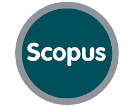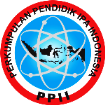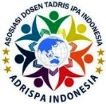Exploring Students' Creative Thinking Skills: A Design of Reliable Instrument in term of Assessing Creative Thinking on Temperature and Heat Concepts
Abstract
This study aims to develop and validate an instrument for assessing creative thinking skills on the topic of temperature and heat among high school students. A quantitative research design was employed, with data analysis conducted using the Rasch model. The study involved 136 grade XI students from two high schools in West Bandung Regency, consisting of 51 male and 85 female participants. The Rasch analysis results indicated a Cronbach’s alpha of 0.78 (good) and an item reliability value of 0.97 (excellent). However, minor revisions are required in the wording of three items to improve linguistic clarity. The percentage distribution of creative thinking indicators was as follows: fluency (70.34%), flexibility (68.57%), originality (60.13%), and elaboration (61.76%). These findings reveal that students’ creative thinking is predominantly characterized by fluency, suggesting that they are relatively proficient at generating multiple ideas based on given problems, likely due to a good understanding of the material. Nevertheless, further instructional efforts are needed to foster higher levels of creative thinking, particularly in flexibility, originality, and elaboration
Keywords: creative thinking skills test, temperature and heat concepts, rasch analysis
Full Text:
PDFReferences
Albar, S. B., & Southcott, J. E. (2021). Problem and project-based learning through an investigation lesson: Significant gains in creative thinking behaviour within the Australian foundation (preparatory) classroom. Thinking Skills and Creativity, 41(May 2019), 100853. https://doi.org/10.1016/j.tsc.2021.100853
Álvarez-Huerta, P., Muela, A., & Larrea, I. (2022). Disposition toward critical thinking and creative confidence beliefs in higher education students: The mediating role of openness to diversity and challenge. Thinking Skills and Creativity, 43(December 2021). https://doi.org/10.1016/j.tsc.2022.101003
Aminudin, A. H., Rusdiana, D., Samsudin, A., Hasanah, L., & Maknun, J. (2019). Measuring critical thinking skills of 11th grade students on temperature and heat. Journal of Physics: Conference Series, 1280(5). https://doi.org/10.1088/1742-6596/1280/5/052062
Asriadi, M., & Istiyono, E. (2020). Exploration of Creative Thinking Skills of Students in Physics Learning. Journal of Educational Science and Technology (EST), 6(2), 151–158. https://doi.org/10.26858/est.v6i2.12737
Astutik, S., Mahardika, I. K., Indrawati, Sudarti, & Supeno. (2020). HOTS student worksheet to identification of scientific creativity skill, critical thinking skill and creative thinking skill in physics learning. Journal of Physics: Conference Series, 1465(1). https://doi.org/10.1088/1742-6596/1465/1/012075
Atmojo, I. R. W., & Sajidan. (2020). Effectiveness of CEL-badis learning model on students’ creative-thinking skills: Case on the topic of simple food biotechnology. International Journal of Instruction, 13(3), 329–342. https://doi.org/10.29333/iji.2020.13323a
Budiarti, I. S., Suparmi, A., Sarwanto, & Harjana. (2017). Analyzes of students’ higher-order thinking skills of heat and temperature concept. Journal of Physics: Conference Series, 909(1). https://doi.org/10.1088/1742-6596/909/1/012055
Cheung, G. W., Cooper-Thomas, H. D., Lau, R. S., & Wang, L. C. (2023). Reporting reliability, convergent and discriminant validity with structural equation modeling: A review and best-practice recommendations. In Asia Pacific Journal of Management (Vol. 41, Issue 2). Springer US. https://doi.org/10.1007/s10490-023-09871-y
Darman, D. R., Suhandi, A., Kaniawati, I., Samsudin, A., & Wibowo, F. C. (2024). Development and Validation of Scientific Inquiry Literacy Instrument (SILI) Using Rasch Measurement Model. Education Sciences, 14(3). https://doi.org/10.3390/educsci14030322
Darmana, A., Sutiani, A., Nasution, H. A., Ismanisa*, I., &
Nurhaswinda, N. (2021). Analysis of Rasch Model for the Validation of Chemistry National Exam Instruments. Jurnal Pendidikan Sains Indonesia, 9(3), 329–345. https://doi.org/10.24815/jpsi.v9i3.19618
Duckett, L. J. (2021). Quantitative Research Excellence: Study Design and Reliable and Valid Measurement of Variables. Journal of Human Lactation, 37(3), 456–463. https://doi.org/10.1177/08903344211019285
Hagell, P. (2014). Testing Rating Scale Unidimensionality Using the Principal Component Analysis (PCA)/<i>t</i>-Test Protocol with the Rasch Model: The Primacy of Theory over Statistics. Open Journal of Statistics, 04(06), 456–465. https://doi.org/10.4236/ojs.2014.46044
Haug, B. S., & Mork, S. M. (2021). Taking 21st century skills from vision to classroom: What teachers highlight as supportive professional development in the light of new demands from educational reforms. Teaching and Teacher Education, 100, 103286. https://doi.org/10.1016/j.tate.2021.103286
Heliawati, L., Afakillah, I. I., & Pursitasari, I. D. (2021). Creative problem-solving learning through open-ended experiment for students’ understanding and scientific work using online learning. International Journal of Instruction, 14(4), 321–336. https://doi.org/10.29333/iji.2021.14419a
Herpiana, R., Rosidin, U., & Abdurrahman, A. (2019). Development of Instruments to Train Critical and Creative Thinking Skills in Physics Assessment for High School Students’ Learning. Journal of Physics: Conference Series, 1155(1). https://doi.org/10.1088/1742-6596/1155/1/012046
Istiyono, E. dkk. (2018). Pengembangan Tes. Cakrawala Pendidikan, 190–200.
Kamar, N., Kusairi, S., & Zubaidah, S. (2016). Pengembangan asesmen formatif dan remediasi berbasis komputer pada pokok bahasan suhu dan kalor smp kelas vii 1, 2, 3. 4(2), 66–76.
Kamila, N., Budi Prastowo, S. H., & Nuraini, L. (2020). Penerapan Model Application of Step Instruction and Elaboration (APPOSITE) untuk Meningkatkan Hasil Belajar Kognitif Siswa SMA pada Materi Suhu dan Kalor. Journal of Natural Science and Integration, 3(2), 163. https://doi.org/10.24014/jnsi.v3i2.9348
Kemendikbud. (2024). Capaian Pembelajaran Pada Pendidikan Anak Usia Dini, Jenjang Pendidikan Dasar, Dan Jenjang Pendidikan Menengah Pada Kurikulum Merdeka (Issue 021).
Khoiri, A., Nulngafan, N., Sunarno, W., & Sajidan, S. (2019). How is Students’ Creative Thinking Skills? An Ethnoscience Learning Implementation. Jurnal Ilmiah Pendidikan Fisika Al-Biruni, 8(2), 153–163. https://doi.org/10.24042/jipfalbiruni.v0i0.4559
Kucam, E., & Gülleroğlu, H. D. (2023). Examination of Differential Item Functioning in PISA 2018 Mathematics Literacy Test with Different Methods. Journal of Measurement and Evaluation in Education and Psychology, 14(2), 128–135. https://doi.org/10.21031/epod.1122857
Kuniawan, M. Z. B. A. A. S. A. S. I. K. B. C. A. H. A. F. (2023). Validity and Reliability of the Global Warming Instrument: A Pilot Study Using Rasch Model Analysis. Jurnal Pendidikan MIPA, Vol 24, No 4 (2023): Jurnal Pendidikan MIPA, 912–922. https://jurnal.fkip.unila.ac.id/index.php/jpmipa/article/view/29266/pdf
Kusairi, S. (2013). Analisis Asesmen Formatif Fisika Sma Berbantuan Komputer. Jurnal Penelitian Dan Evaluasi Pendidikan, 16(3), 68–87. https://doi.org/10.21831/pep.v16i0.1106
Malik, A., Nuraeni, Y., Samsudin, A., & Sutarno, S. (2019). Creative Thinking Skills of Students on Harmonic Vibration using Model Student Facilitator and Explaining (SFAE). Jurnal Ilmiah Pendidikan Fisika Al-Biruni, 8(1), 77–88. https://doi.org/10.24042/jipfalbiruni.v8i1.3056
Musa’adah, R., & Kusairi, S. (2020). Analisis Penguasaan Konsep Siswa Materi Suhu Kalor pada Pembelajaran Cognitive Apprenticeship (CA) disertai Formative E-Assessment. JRPF (Jurnal Riset Pendidikan Fisika), 4(2), 85–90.
Nafi’ah, Z., Mustikasari, V. R., & Pratiwi, N. (2019). Pengembangan instrumen tes two-tier multiple choice untuk mengukur kemampuan berpikir tingkat tinggi peserta didik SMP pada materi suhu dan kalor. JIPVA (Jurnal Pendidikan IPA Veteran), 3(2), 115. https://doi.org/10.31331/jipva.v3i2.777
Nurdiana, H. (2020). Creative thinking skills profile of junior high school students in science learning. Journal of Physics: Conference Series, 1567(2). https://doi.org/10.1088/1742-6596/1567/2/022049
Nurdini, N., Suhandi, A., Ramalis, T., Samsudin, A., Fratiwi, N. J., & Costu, B. (2020). Developing Multitier Instrument of Fluids Concepts (MIFO) to Measure Student’s Conception: A Rasch Analysis Approach. Journal of Advanced Research in Dynamical and Control Systems, 12(6), 3069–3083. https://doi.org/10.5373/JARDCS/V12I6/S20201273
Permana, N. D., Lestari, I., Susanty Harahap, F. D., Azhar, A., &
Defianti, A. (2023). Project Based Learning (PjBL) Model with STEAM Approach: Its Impact on Students Creative Thinking Skills on Energy in Living System Topic. Journal of Natural Science and Integration, 6(2), 186. https://doi.org/10.24014/jnsi.v6i2.25791
Prasetya, W. A., & Pratama, A. T. (2023). Item quality analysis using the Rasch model to measure critical thinking ability in the material of the human digestive system of Biology subject in high school. Jurnal Penelitian Dan Evaluasi Pendidikan, 27(1), 76–91. https://doi.org/10.21831/pep.v27i1.58873
Ramadhanti, R. N., & Azhar. (2022). E-Module Validation Based on Contextual Teaching and Learning for High School Optical Instruments. Journal of Natural Science and Integration P-ISSN, 5(2), 237–246. https://doi.org/10.24014/jnsi.v5i2.16982
Rani, S. A., Mundilarto, Warsono, & Dwandaru, W. S. B. (2019). Physics virtual laboratory: An innovative media in 21st century learning. Journal of Physics: Conference Series, 1321(2). https://doi.org/10.1088/1742-6596/1321/2/022026
Robinson, M. A. (2018). Using multi-item psychometric scales for research and practice in human resource management. Human Resource Management, 57(3), 739–750. https://doi.org/10.1002/hrm.21852
Rosha, J. M., & Hidayat, A. (2023). Analysis of Creative Thinking Skill Instrument Test (CreaTSIT) on renewable energy topic for senior high school student using Rasch model. Journal of Physics: Conference Series, 2596(1). https://doi.org/10.1088/1742-6596/2596/1/012066
Sa’diyah, L. H., Siahaan, P., Suhendi, E., Samsudin, A., Novia, H., Komalasari, K., Umar, F. A., Dalila, A. A., Fatima, W. O., Hendriyani, D., & Purwanto, M. G. (2021). Enhancing sundanese students’ creative thinking skills using ICARE model on physics concepts: A rasch analysis approach. Journal of Physics: Conference Series, 2098(1). https://doi.org/10.1088/1742-6596/2098/1/012014
Sahida, D., & Zarvianti, E. (2019). Development of Problem Based Learning (PBL) practicum guide to improve student Creative Thinking Skills (CTS) in basic physics subject. Journal of Educational and Learning Studies, 2(1), 39. https://doi.org/10.32698/0492
Samsudin, A., Aminudin, A. H., Novia, H., Suhandi, A., Fratiwi, N. J., Yusup, M., Supriyatman, S., Masrifah, M., Adimayuda, R., Prahani, B. K., Wibowo, F. C., Faizin, M. N., & Costu, B. (2023). Identifying Javanese Students’ Conceptions on Fluid Pressure with Wright Map Analysis of Rasch. Journal of Natural Science and Integration, 6(2), 173. https://doi.org/10.24014/jnsi.v6i2.21822
Saregar, A., Cahyanti, U. N., Susilowati, N. E., Anugrah, A., & Muhammad, N. (2021). Core Learning Model: Its Effectiveness Towards Students’ Creative Thinking. International Journal of Evaluation and Research in Education, 10(1), 35–41. https://doi.org/10.11591/ijere.v10i1.20813
Soeharto, S. (2021). Development of A Diagnostic Assessment Test to Evaluate Science Misconceptions in Terms of School Grades: A Rasch Measurement Approach. Journal of Turkish Science Education, 18(3), 351–370. https://doi.org/10.36681/tused.2021.78
Sumintono, B. (2018). Rasch Model Measurements as Tools in Assesment for Learning. 173(Icei 2017), 38–42. https://doi.org/10.2991/icei-17.2018.11
Sumintono, B., & Widhiarso, W. (2014). Aplikasi Model Rasch Untuk Penelitian Ilmu-Ilmu Sosial.
Sundari, P. D., & Sarkity, D. (2021). Keterampilan Berpikir Kritis Siswa SMA pada Materi Suhu dan Kalor dalam Pembelajaran Fisika. Journal of Natural Science and Integration, 4(2), 149. https://doi.org/10.24014/jnsi.v4i2.11445
Surucu, L., & Maslakci, A. (2020). Business & Management Studies : Business & Management Studies: An International Journal, 8(3), 2694–2726.
Suwistika, R., Ibrohim, I., & Susanto, H. (2024). Improving Critical Thinking and Creative Thinking Skills through POPBL Learning in High School Student. JPBI (Jurnal Pendidikan Biologi Indonesia), 10(1), 115–122. https://ejournal.umm.ac.id/index.php/jpbi/article/view/30172
Syukri, M., Herliana, F., Amalia, R., & Wahyuni, S. (2022). The Implementation of PBL Based on Blended Learning to Improve Students’ Creative Thinking in Physics Learning. Journal of Physics: Conference Series, 2377(1). https://doi.org/10.1088/1742-6596/2377/1/012085
Taber, K. S. (2018). The Use of Cronbach’s Alpha When Developing and Reporting Research Instruments in Science Education. Research in Science Education, 48(6), 1273–1296. https://doi.org/10.1007/s11165-016-9602-2
Tennant, A., & Conaghan, P. G. (2007). The Rasch measurement model in rheumatology: What is it and why use it? When should it be applied, and what should one look for in a Rasch paper? Arthritis Care and Research, 57(8), 1358–1362. https://doi.org/10.1002/art.23108
Treffinger, D. J., Young, G. C., Selby, E. C., & Shepardson, C. (2002). Assessing Creativity: A Guide for Educators. In Journal of Education and Learning (Issue December). http://www.eric.ed.gov/ERICWebPortal/detail?accno=ED505548%0Ahttp://dx.doi.org/10.1007/s41465-016-0002-3
Trilling, B., & Fadel, C. (2012). 21st century skills: Learning for life in our times. John Wiley & Sons.
Utari, S., Manopo, J., Feranie, S., Prima, E. C., & Iswanto, B. H. (2020). Development of Standardized Online Test to Assess the Students 21st Century Skills. Proceedings of the 7th Mathematics, Science, and Computer Science Education International Seminar, MSCEIS 2019. https://doi.org/10.4108/eai.12-10-2019.2296465
Wartono, W., Diantoro, M., & Bartlolona, J. R. (2018). Influence of Problem Based Learning Learning Model on Student Creative Thinking on Elasticity Topics A Material. Jurnal Pendidikan Fisika Indonesia, 14(1), 32–39. https://doi.org/10.15294/jpfi.v14i1.10654
White, M., & Ronfeldt, M. (2024). Monitoring Rater Quality in Observational Systems: Issues Due to Unreliable Estimates of Rater Quality. Educational Assessment, 29(2), 124–146. https://doi.org/10.1080/10627197.2024.2354311
Zarvianti, E., & Sahida, D. (2020). Designing Comics By Using Problem Based Learning (PBL) to Improve Student’s Creative Thinking Skills. International Journal of Social Learning (IJSL), 1(1), 75–88. https://doi.org/10.47134/ijsl.v1i1.8
DOI: http://dx.doi.org/10.24014/jnsi.v8i2.31857
Refbacks
- There are currently no refbacks.

Journal of Natural Science and Integration
E-ISSN: 2620-5092 P-ISSN: 2620-4967
Published By:
Department of Science Education, Faculty of Education and Teacher Training,
State Islamic University of Sultan Syarif Kasim Riau, Indonesia
Mailing Address:
Jl. H.R Soebrantas Km. 15 No. 155
Kelurahan Simpang Baru
Kecamatan Tuah Madani, Pekanbaru, Riau, Indonesia
Email: jnsi.tadrisipa@uin-suska.ac.id
Indexed By:
Journal of Natural Science and Integration is licensed under a Creative Commons Attribution 4.0 International License.


_-_Copyy2.png)






.jpg)
.png)
.jpg)
.jpg)




